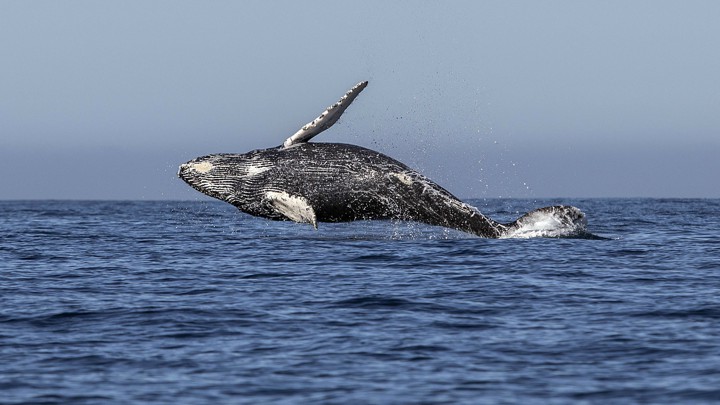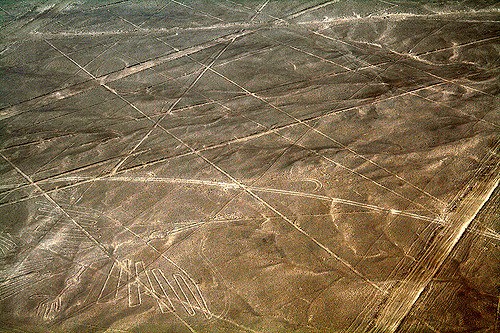via 3 Quarks Daily: Ed Yong in The Atlantic

FERNANDO CASTILLO / AFP / GETTY
The first time I came face to face with a sea lion, I nearly screamed. I was snorkeling, and after a long time spent staring down at colorful corals, I looked up to see a gigantic bull, a couple of feet in front of my mask. Its eyes were opalescent. Its long canines hinted at its close evolutionary ties to land-based predators like bears and dogs. And most unnervingly of all, it was huge.
Continue reading
==============================
via Interesting Literature
Notes towards a commentary on Tennyson’s allegory

Alfred, Lord Tennyson (1809-92) wrote two versions of ‘The Lady of Shalott’. Tennyson’s poem ‘The Lady of Shalott’ exists as both a 20-stanza poem published in 1832, and the revised version of 19 stanzas – which is the one readers are most familiar with – which was published in 1842. The poem, partly inspired by Arthurian legend (hence the presence of the knight, Lancelot) and partly by the epic sixteenth-century poem The Faerie Queene written by Edmund Spenser, remains popular, although the precise meaning of the poem remains elusive. So, a few words of analysis about this enchanting poem may help to clarify things.
Continue reading
==============================
via Boing Boing by Seamus Bellamy

Time for a bit of folklore.
Benandonner was a giant from Scotland. He was something of a tool and constantly threatened to lay a beating on Ireland.
Fionn mac Cumhaill was a giant too. He resided in Ireland. Fionn wasn't down with Benandonner's wanting to put a hurt on his homeplace. In fact, Fionn was so bent out of shape about it that he decided to rip up chunks of County Atrim and throw them into the sea in order build a causeway to Scotland. The causeway would make it possible for Fionn to travel and beat Benandonner's ass.
Continue reading
==============================
via the Big Think blog by Philip Perry
It’s the first time magnetoreception has been discovered in animals, researchers claim.
One of the longest running mysteries is exactly how birds navigate when they fly south for the winter or back come spring. For forty years, scientists have known that birds can somehow sense the magnetic field and navigate by it. But they’ve been unable to figure out how, until now. Two teams have recently identified that birds can actually visualize the magnetosphere.
Continue reading
==============================
via About History by Alcibiades

The Great Silk Road was a caravan road connecting East Asia to the Mediterranean from Ancient times into the Middle Ages. It was used for exporting silk from China, hence its name. The term was introduced by the German geographer Ferdinand von Richthofen in 1877.
Continue reading
==============================
via Arts & Letters Daily: Michael Dirda in The Washington Post
Edward Lear is the other great master of Victorian nonsense. Admittedly, Lear (1812-1888) lacks the universal appeal of his contemporary Lewis Carroll, but his longer poems — such as “The Jumblies” (“Their heads are green, and their hands are blue”), “The Pobble Who Has No Toes” and “The Owl and the Pussy-Cat” — have been favorites for generations among children and adults alike. A multitalented man, Lear also composed scores of four-line, non-obscene limericks, coined immortal phrases such as “runcible spoon” and dashed off spindly, surreally cartoonish drawings to accompany virtually everything he wrote.
Jenny Uglow calls her capacious and astute new biography “Mr. Lear,” which is certainly straightforward. Still, I wonder if she means us to think, if only for a flickering moment, of yet another great English writer and artist for children, the celebrated “Miss Potter.” Like Lear, Beatrix Potter was equally accomplished with pen or brush and, like him, too, much of her life was characterized by hard work, melancholy and the search for love.
Continue reading
==============================
via The Observer by Edward Helmore

Elvis performing on the ’68 Elvis Comeback Special. Photograph: Michael Ochs Archives
More than 40 years after Elvis Presley’s death, a documentary backed by his former wife, Priscilla, will chart the singer’s early life as a young man from Tupelo, Mississippi.
A two-part, three-hour HBO documentary, Elvis Presley: The Searcher, will be broadcast in the US this month [April 2018]. It has been backed by the Presley estate, in the hope that it will re-focus attention on Presley’s captivating music and presence, as opposed to his sad physical decline. The Searcher portrays the young Elvis as an “eclectic” music lover who, before making his first recordings at Sun Studio, was slipping into the black clubs on Beale Street in Memphis, or into the black gospel churches, to assemble “his version of himself”.
Continue reading
==============================
via Boing Boing by Seamus Bellamy

Those thousands of drawings in the desert of southern Peru that we call the Nazca Lines? They're so yesterday. According to National Geographic, all of the cool kids know that the geoglyphs worth paying attention to are those new ground etchings that archaeologists recently grokked in Peru's Palpa province.
Continue reading
==============================
via the Big Think blog by Paul Ratner
Scientists in Scotland find tracks of the largest animal that walked on Earth during the Middle Jurassic Period.
Over 50 dinosaur tracks were found by researchers on the Scottish Isle of Skye. The footprints date back to 174 million to 164 million years ago and help us understand the Middle Jurassic period. Not many fossil sites have been found from that time so far and the new discovery is being seen as very significant.
Continue reading
==============================
via Interesting Literature
In this week’s Dispatches from The Secret Library, Dr Oliver Tearle examines a most unTrollopian Trollope novel
Anthony Trollope was a prolific writer. He wrote 47 novels, as well as numerous works of non-fiction including autobiography and travel writing. And he did much of this while holding down a job at the Post Office, by getting up at 5.30 every morning and writing 250 words every 15 minutes, pacing himself with a watch. (Clearly such industriousness ran in the family: Trollope’s mother, Frances Trollope, woke at 4 o’clock every morning and got her day’s writing finished in time to serve breakfast.) Not everyone was a fan of his work, which was considered too workmanlike for such an artful writer as Henry James. In response to the title of one of Trollope’s novels, Can You Forgive Her?, James is said to have quipped: ‘Yes, and forget her, too.’ Yet his novels of provincial life, British politics, and ecclesiastical scheming remain in print, with his Chronicles of Barsetshire and his Palliser novels still firm favourites with many readers.
Continue reading
No comments:
Post a Comment